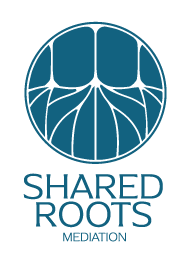FAQ
-
When people hear the term “sexual harm”, many of them think only of the most violent crimes, such as rape and sexual assault. But, at Shared Roots, we use this term for a specific reason: The array of what can constitute “sexual harm” goes far beyond what is considered a crime under criminal law or even what is actionable under civil law. Broadly speaking, sexual harm is any unwanted behavior of a sexual nature directed at someone who has not enthusiastically consented; these behaviors can include sexual harassment, assault, or coercion; rape; revenge porn; and many other forms of gender-based violence and harm of a sexual nature. At Shared Roots, we do not seek to label or define the specific harm or whether the person harmed would have recourse under the law. Rather by using restorative and transformative justice principles, we ask if they experienced hurt and were negatively affected by what occurred. The question isn’t “What is the specific sexual crime?” but “Who was harmed and what do they need to heal?”
-
Both the terms restorative justice and transformative justice can have many different meanings and different relationships to each other depending on who is being asked. At Shared Roots, we use these terms to encompass both a philosophy and a social justice movement, rooted in indigenous practices and focused on how we, as a society, should address harm and wrongdoing. In using these terms, we wish to emphasize our connections to each other while acknowledging that, because we are all human beings, we can cause hurt and be hurt. This hurt creates obligations not only to repair these harms caused by the misconduct but also to restore relationships, community, and social equity.
The idea of justice as the restoration of right relationships and conflict transformation - ideals of social equity - sits at the center of our definitions of restorative and transformative justice. We at Shared Roots Mediation see this as a process of bringing together those persons who have caused harm, those who have experienced it and been affected by it, and their communities to create a plan of repair for this specific harm, focused on the harmed person and their needs and healing. But we also seek to go beyond one particular conflict to name, define, and educate harm-doers and the community at large on the larger societal injustices that lead to specific harms, as part of our commitment to transformative justice. Through our philosophies of restorative and transformative justice held together, we seek to create social change in individual relationships and communities and society as a whole.
-
Mediation refers to a specific dispute resolution practice, which may also be used as part of an RJ/TJ process if deemed appropriate by those involved. You may be most familiar with the facilitative mediation process, in which the mediator - a neutral third party - assists the parties in the dispute through a negotiation to reach a mutually agreeable resolution. By asking questions, validating parties’ positions, and encouraging openness and honesty in joint sessions and separate party “caucuses”, the mediator seeks to identify the interests and needs of each party that may offer options for a resolution. While it may vary from mediator to mediator, facilitative mediation follows a specific process with little variation between particular disputes.
At Shared Roots Mediation, we will incorporate or use solely facilitative mediation if requested by the parties to a dispute. But we also seek to include the principles and practices of restorative and transformative justice as often as we can. In this way, we encourage parties to think beyond a particular conflict to examine the larger context involved in the dispute and how a resolution can address this context and possibly create space for social change.
-
Yes, if all parties involved agree and voluntarily enter into the process. But, that being said, not all incidents of harm are appropriate and not all people are ready to engage in this process. Each case must be evaluated individually by the parties, aided by the practitioner to determine whether and what restorative and transformative justice process should be used.
-
Each mediation or RJ/TJ process at Shared Roots depends on the specific circumstances and context of the harm and the particular parties involved. Some processes will follow a more traditional mediation process, while others occur over a long period of time with multiple and different types of meetings, sessions, and/or circles. Whatever procedure is used, however, Shared Roots ensures a number of elements are in place, including the following:
Consent: Only parties who fully consent to the process will be involved. No one can be forced, required, or coerced to participate in a Shared Roots process, and consent is required at every step and revocable at any time.
Community: Both the person harmed and the harm-doer are encouraged to involve their community in the process. Having their chosen community involved helps to ensure support through what can be a difficult process, as well as provide an external source of accountability and aid for collective change.
One caveat: While either party can choose to bring legal representation, it is important to note that mediation and RJ/TJ will not proceed like traditional legal processes. This is not an adversarial case with communication controlled by lawyers and judges.
Confidentiality: Under Illinois law, any information shared during a mediation or restorative justice process is confidential and cannot be used in court against any party. All participants will be requested to sign an agreement to keep all parts of the process confidential with any exceptions to be decided by the parties together. At the conclusion of the full process, the people directly involved in the harm may choose how and what to disclose publicly as part of any resolution. All participants must agree to abide by this agreement to participate in the process.
-
At this point in history, the popular paradigm of justice is that encompassed by retributive justice, which is the theory on which the U.S.’s current criminal legal system is built. Retributive justice asks three questions:
What laws have been broken?
Who did it?
What punishment do they deserve?
The actual question of “Is justice being served?” does not appear to enter the equation. This form of “justice” looks backward to the offender’s actions solely, which has been labeled a “crime” by whatever government has the authority at the time. The sole focus is on identifying and punishing the perpetrator. The person who was harmed is usually left out of this process, serving little role except as a witness; in this way, harm to them can be said as having been “stolen” by the State; the person harmed no longer has any claim to it or any healing they may seek from having the harm addressed. (See Nils Christie.)
While restorative and transformative justice also looks at the discrete wrong, it goes beyond this inquiry to an examination of the context in which the harm occurred. In a RJ/TJ process, we ask:
Who has been hurt?
What are their needs?
Whose responsibility is it to address these needs?
Focusing on these questions serves the ultimately forward-looking outcome of restoring relationships to social equity. In this way, the dignity and humanity of all people involved - the person harmed, the harm-doer, and their communities - are taken into account, while putting the person harmed and their needs at the center of the process.
Additionally, at Shared Roots, we aim to shift the paradigm presented by the traditional legal system even further by asking what community and social conditions allowed the harm to occur and what collective actions can be taken to help prevent future harm. In this way, we create space to repair harm and relationships to change future individual actions, while also building and maintaining community and social structures to prevent future harm.

